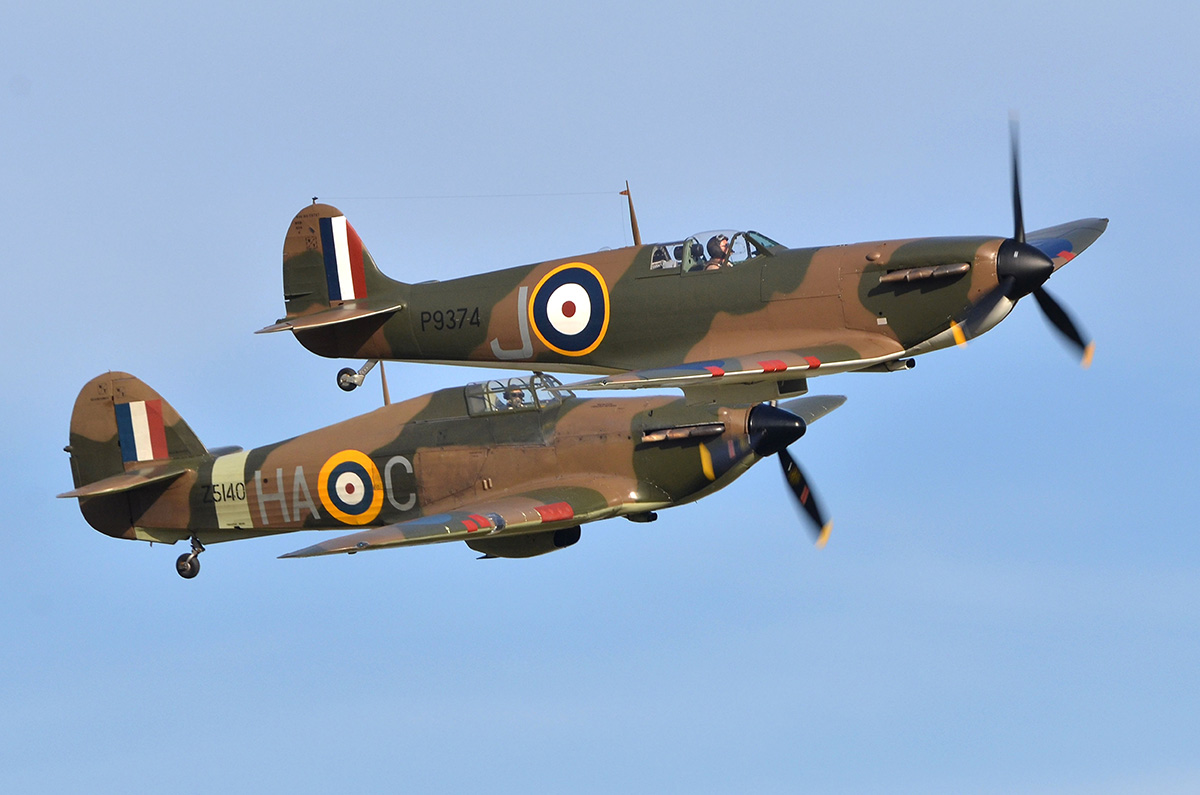When Britain declared war on Germany on September 3, 1939, the news was greeted with excitement at the home of No. 74 “Tiger” Squadron at RAF Hornchurch, east of London. Industry swiftly supplanted emotion as airmen and ground crews began to fill thousands of sandbags to create blast-proof dispersals for the squadron’s Supermarine Spitfires. One pilot absent from the hard labor was Pilot Officer John Freeborn, a 19-year-old who spoke his mind with a confidence that belied his tender years. As squadron adjutant, Freeborn excused himself from sandbag duty on account of the growing pile of paperwork on his desk.
The next day there was a squadron scramble that proved to be a false alarm. There were no Luftwaffe bombers approaching the coast, so the nervous Royal Air Force pilots sat in the late summer sunshine and waited for what they believed was an imminent enemy attack.
At 0645 hours on September 6 there was another scramble and Flight Lt. Adolph Malan, nicknamed “Sailor” because of his stint as a naval cadet, led Red Section through a thick ground mist into a clear blue sky. Yellow Section—Flying Officer Vincent “Paddy” Byrne; his no. 2, Acting Flying Officer John Freeborn; and Sgt. Pilot John Flinders as no. 3—followed.
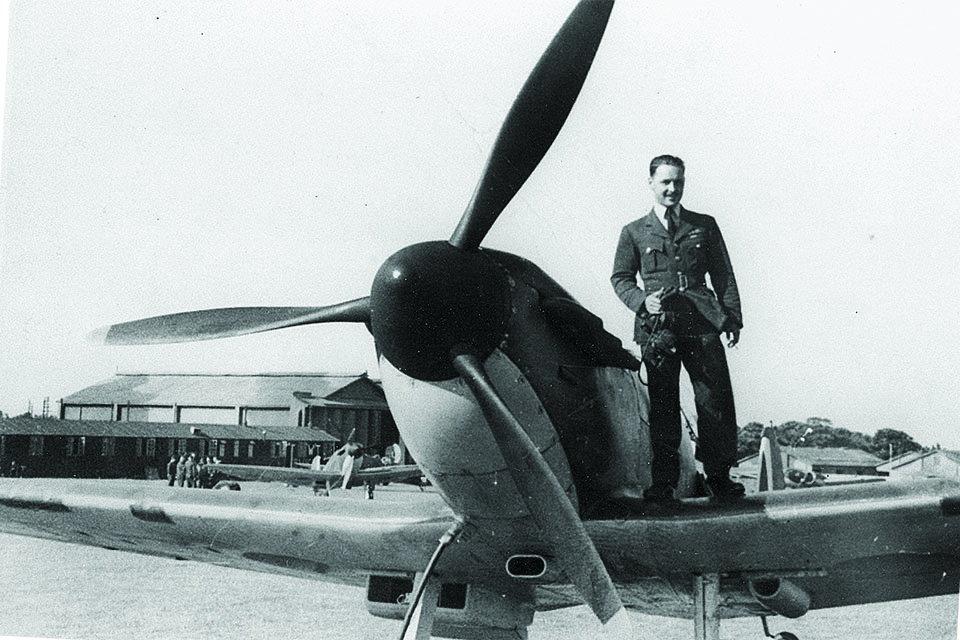
Adrenaline coursed through the pilots as they headed east to intercept aircraft that a searchlight battery had reported approaching the Essex coast at high altitude. Also scrambled were 12 Hawker Hurricanes from No. 56 Squadron at North Weald. Two of 56 Squadron’s reserve Hurricanes soon followed, with pilots Montague Hulton-Harrop and Frank Rose unable to resist the urge to join the hunt. None of the 20 fighter pilots had ever been in combat, or even seen a German airplane up close, and this inexperience, ignorance and excitement was about to have fatal consequences.
I first met John Freeborn in the summer of 2004, when I was writing a book about the Luftwaffe bombing of London. As one of the few surviving RAF pilots who had flown night patrols against the Germans, his input was invaluable. He had only recently agreed to talk publicly about his wartime experience as the pilot who had flown more operational hours during the Battle of Britain than any other. Freeborn was in his mid-80s when I got to know him, living by himself in northwest England, having outlived two wives. He was in poor health and lonely, so he enjoyed talking about old times. What hadn’t dulled over the years was his character: Like many Yorkshiremen he was forthright, funny and fearless in what he said. He could be provocative, yet his character was underpinned by an acute sense of probity.
Freeborn joined the RAF in 1937 and was posted in October 1938 to 74 Squadron with the rank of acting pilot officer. Having trained on a de Havilland Tiger Moth, he was now introduced to another biplane, the Gloster Gauntlet, which he appreciated for its gentle maneuverability.
On February 13, 1939, 74 Squadron took delivery of its first Spitfire. Freeborn described the new fighter as “bloody wonderful,” adding, “but I was quite nervous. I was only a kid and I’d never flown a monoplane.”
Freeborn got a crash course in how to fly the Spitfire as he sat in the cockpit on the grass runway at Hornchurch. Flight Commander Wilfred “Paddy” Treacy talked him through the controls and then wished the teenager good luck.
The Spitfire’s long nose prevented Freeborn from seeing where he was going, and the sheer power of his new mount took him by surprise. “I took off and went so bloody fast!” he said. “I thought, ‘Bloody hell, I’ve got it all wrong,’ and I went between the hangars at 180 mph.”
Freeborn soon mastered the Spitfire, but some of his fellow pilots were less easy to handle. He was in B Flight, commanded by Treacy, as was another Irishman, Byrne. “They went to school together, they both came from Dublin and they fought a lot,” recalled Freeborn.
There were other strong characters in the squadron: Sgt. Pilot Peter Chesters; Pilot Officer Don Cobden, a huge man who had played rugby for New Zealand; and South African Malan. Handsome and charismatic, Malan was at first friendly with Freeborn, but slowly another side began to emerge. “Malan was just married, always broke, always borrowing money,” he said. “And if you had no money to lend him he would take it out of your pockets. You couldn’t stop him—too big and strong.”
Nonetheless, Freeborn liked Malan well enough to apply for a transfer to his A Flight, and early on the morning of September 6 the South African led his flight to intercept the approaching hostiles high over Essex. Unfortunately, the enemy aircraft supposedly sighted by the searchlight battery did not exist.
Suddenly Malan’s voice called over the radio: “Tally-ho! Number one attack. Go!” Freeborn and Byrne turned in their cockpits and saw two aircraft flying a mile behind and about 1,000 feet below the dozen 56 Squadron Hurricanes, which they took to be fighters escorting the unseen Luftwaffe bombers.
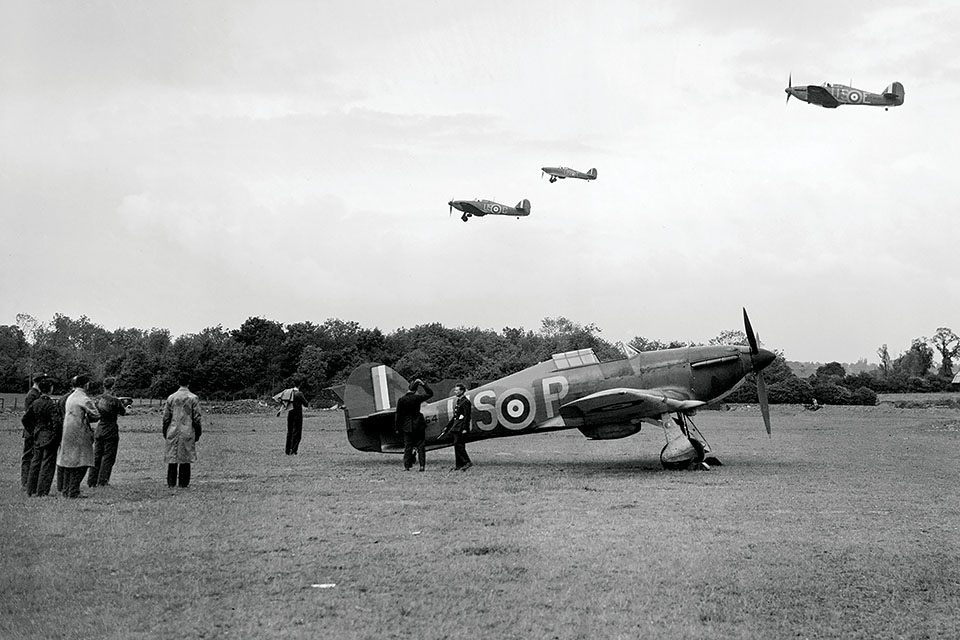
Repositioning to attack from the rear, Byrne dispatched one of the aircraft and Freeborn opened fire on the other with his Spitfire’s eight Browning .303-inch guns, sending it down in flames.
Freeborn broke off the attack with a sense of euphoria, believing he had just shot down his first German. A short while later he spotted what he took to be a Luftwaffe bomber and closed in for the kill. “I think I would have shot down more if it weren’t for Flinders, the sergeant pilot,” said Freeborn. “He got in the way. I was shouting at him to get out of the bloody way, either shoot or let me shoot it. But then he said, ‘It’s one of ours.’ When the adrenaline is running, you don’t realize these things. Byrne had landed and was under close arrest, and when I landed [squadron commander] George Sampson was waiting and I’m under close arrest. And where’s Malan? Never saw him. They couldn’t find him. He’d gone home [he lived with his wife off base] and dropped us right in the s—.”
Byrne had shot down the 56 Squadron Hurricane flown by Frank Rose, who managed to bail out, but Freeborn had downed his wingman, 26-year-old Pilot Officer Montague Hulton-Harrop, who was dead, the first British pilot combat fatality of the war. Had Flinders not intervened, Freeborn probably would have also shot down a Bristol Blenheim he believed to be a German bomber.
Hurricanes from 151 Squadron had also been scrambled, and Sqd. Ldr. Edward Donaldson, who witnessed the attack, had no doubt who was to blame. “We landed back at North Weald very angry at the terrible mess-up where our controllers had so irresponsibly vectored two wings onto each other, guns loaded and pilots warned for combat,” he remarked after the war.
The incident has become known as the Battle of Barking Creek, which is curious given that Barking Creek is in east London and Freeborn shot down Hulton-Harrop many miles north over rural Essex. But partially treated sewage once flowed into the River Thames at Barking Creek, and it’s been suggested that Barking Creek was a euphemism for “s— creek,” the American expression that had recently found its way to Britain.
The court-martial that took place at HQ Fighter Command on October 17, 1939, was held in private, and the findings have never been published. Freeborn and Byrne had a first-class defense team. “We had two great barristers in Sir Patrick Hastings and Roger Bushell [later murdered by the Nazis for his part in organizing the ‘Great Escape’],” said Freeborn.
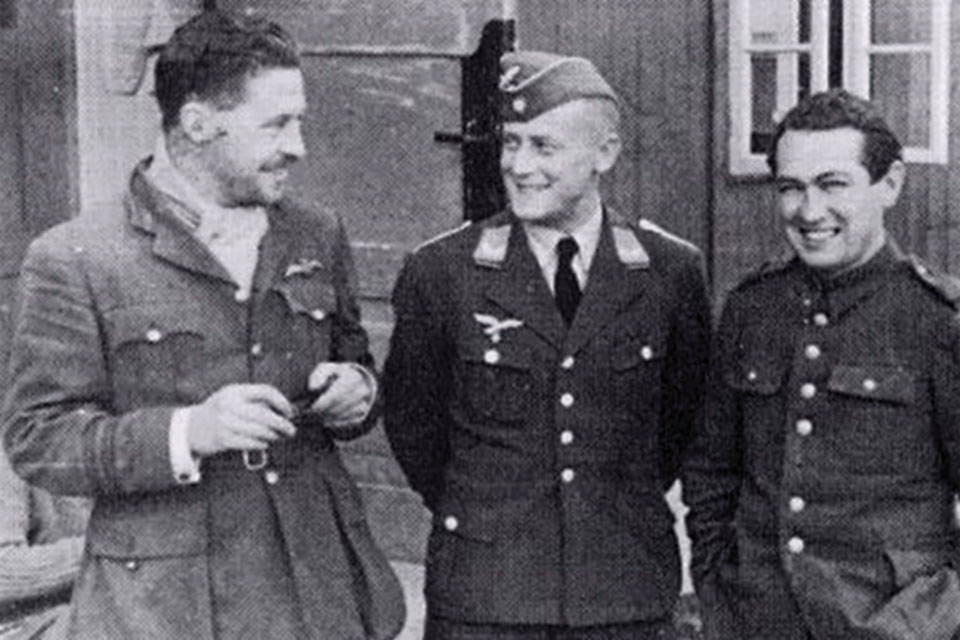
Malan, who reportedly described Freeborn’s actions as “impetuous,” confirmed he had given the order to engage but also claimed that moments later, on realizing his mistake, he had called “friendly aircraft—break away!” Freeborn, Byrne and Flinders all said they never heard the counterorder. “Hastings didn’t half take Malan to pieces,” recalled Freeborn. “He told him he was a downright bloody liar.”
The court-martial lasted half a day and, after considering the evidence, the tribunal acquitted Freeborn and Byrne. “My confidence didn’t really suffer,” reflected Freeborn of the incident. “I was very sorry about it, but it was Malan’s fault. He gave us the order to attack and we attacked. It created friction between Malan and myself, but not the rest of the squadron. They couldn’t have cared less. Malan wasn’t liked. He was a bully.”
Others were more generous in their appraisal of the man, who was a vociferous anti-apartheid protestor in South Africa after the war. When Malan died in 1963 of Parkinson’s disease, The Times of London said in his obituary that he had been an inspiring and unselfish leader in combat and in politics. The paper also hinted at Malan’s other side in describing “his coldly calculating attitude” as a pilot. Did that include lying to protect his reputation? Perhaps the fairest assessment of what happened that September morning is to attribute it to the fog of war.
Fortunately out of the confusion emerged greater clarity. Pilots were instructed to sharpen up their visual identification of aircraft, while the training of controllers, plotters and radar operators was improved. An IFF (identification friend or foe) signal system was also fitted into aircraft to aid ground controllers.
Freeborn and Malan remained in 74 Squadron despite their mutual dislike. The two men were ferociously strong characters, and the two best pilots in the squadron, as they proved once the Phoney War ended and Germany invaded the Low Countries in May 1940. That month Malan was awarded the Distinguished Flying Cross and Freeborn became the de facto commander of B Flight. It also marked the first of Freeborn’s 13½ kills.
“I caught this one knocking bloody seven bells out of a Spitfire over Dunkirk,” he remembered of the Messerschmitt Me-109E he encountered on the French coast. “As soon as he saw me, he pushed his stick forward, which we [Spitfire pilots] couldn’t do because the engine would stop and it would be some time before the carburetor would be able to flow again. So instead I half rolled, went through some cloud and of course I came out behind him. I gave him a squirt or two and he hit a telegraph pole with his prop and it knocked him to pieces. I can see to this day the old farmer who was alongside ploughing, and this 109 went on, straight through his cottage, and he’s shaking his fist at me.”
Having shot down one of his own pilots, it was a relief for Freeborn to dispatch an enemy for whom he felt no pity. “They were Germans and they had to go,” he said. “I had respect for their pilots—they were very good—but they didn’t like to mix it.”
Freeborn did. He soon acquired a reputation for ruthlessness. One of his sergeant pilots, Bill Skinner, recounted how a Junkers Ju-88A was shot down over France in May 1940: “The Nazi crew were seen to get out and shake their fists at us. That proved too much for John Freeborn. He promptly shot them up and consigned them to their maker.” Freeborn acknowledged the incident with a laugh. “I did things like that,” he said.
Freeborn’s methods upset some of his fellow pilots. Harbourne Stephen had a blazing row with him after he heard of his habit of buzzing Luftwaffe pilots who had bailed out. “I used to take the piss out of Stephen and say, ‘Oh, you should have seen him, climbing up his bloody shroud lines,’” remembered Freeborn. “I would sometimes fly quite close to frighten them, so close the slipstream would hit them and it would blow the parachute all over the place. [Stephen] would say I was a rotten bugger for doing that, but I didn’t shoot any, not at all.”
Although Freeborn and Malan despised one another, they shared a mutual respect for their flying ability. Who was the best? “I was a very good pilot, there was no one in the squadron as good as me, not even Malan,” claimed Freeborn.
Indisputably, they brought out the best in each other. Malan, who was appointed 74 Squadron’s CO on August 8, frequently consulted Freeborn on tactics. One of their conversations resulted in abandonment of the Vic formation of three aircraft in favor of the finger-four formation.
Their collaboration bore fruit on August 11 when the squadron flew into combat four times between dawn and 1400, accounting for 23 enemy aircraft, one probable and 14 damaged.
Freeborn shot down a 109 in the second sortie and was leading a third sortie of 11 Spitfires at midday when he was given misleading information by the ground controller. “He was controlling the squadron at 32,000 feet and 10/10ths cloud and he said there are bandits,” recounted Freeborn. “If there were any aircraft anywhere I hadn’t seen them. So I had to come down through the cloud and that’s when we ran into the Messerschmitt 110s.”
Most of Freeborn’s combat reports were lost in the war, but his account of this encounter with dozens of Me-110s is one of the few that survived. “Two of our A/C [aircraft] went down immediately,” he wrote. “I made a sharp turn and got directly onto an E/A [enemy aircraft] which I gave a short burst of 2/3 secs and E/A turned and went down. I did not follow as many E/A were engaged and I had noted another of our A/C damaged. I was again attacked from astern by a 110…and I took decisive action coming up under him and sending a long burst into his tailplane. E/A fell as T/p broke up, falling in a spiral. I watched him go down to 5,000 ft before breaking off due to being short of petrol and ammunition. I then returned to Hornchurch.”
The first of Freeborn’s two kills gave him particular satisfaction. “I got him down with about four bullets from each gun and he just burst into flames,” he recalled. “I was in the middle of 30 or so bloody Germans and it felt good to give the Germans some stick of their own.”
That evening Winston Churchill arrived at 74 Squadron to congratulate the pilots for their achievements. Freeborn was in no mood for pleasantries. In the dogfight with the Messerschmitts he had lost two pilots, including his friend Don Cobden. “He wasn’t received very nicely,” said Freeborn of the prime minister. “He was a swine. He wouldn’t give us any more money. We got 14 and 6 pence a day during the Battle of Britain.”
In time Freeborn saw many of his friends killed: Cobden, Douglas Hastings, Peter St. John, Wally Churches and Peter Chesters, the last as he attempted a victory roll over the airfield in April 1941. “A daft way to die,” reflected Freeborn of his best friend. “I never did daft things like that, or if you do, you do them properly, not the way he did it.”
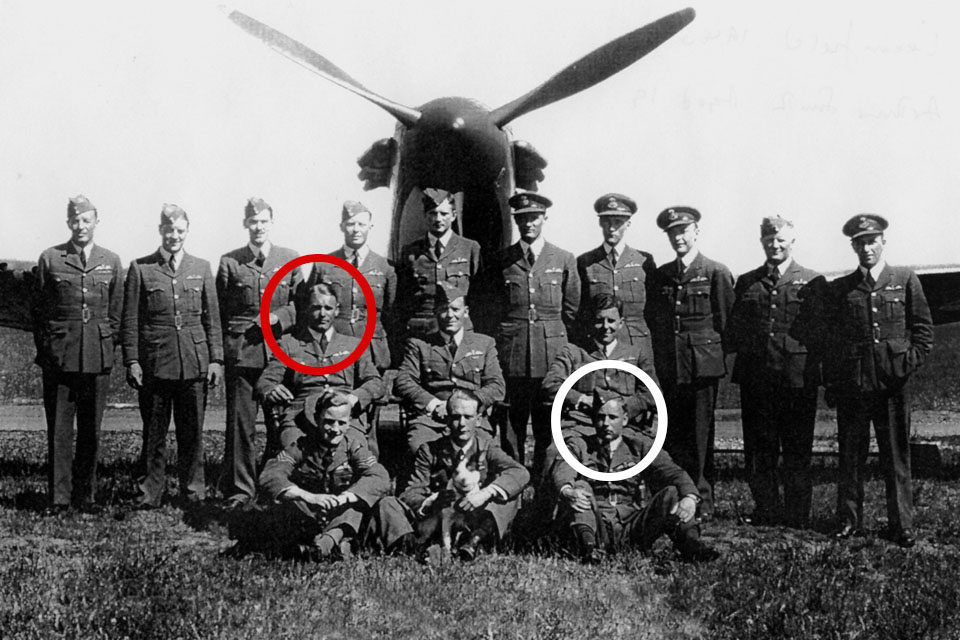
Freeborn did do the odd daft thing in the war, on one occasion buzzing two golfers on a local links course. “I was teaching the doctor to fly, as all medical officers were permitted to fly, and there were two blokes playing golf,” he explained. “I said to the doc, ‘Look at those buggers playing golf and here we are fighting a war.’ I gave them such a s—-ing up and they were lying flat on their faces. That was the end of that.”
But it wasn’t. The terrified golfers were a pair of wing commanders, and Freeborn received a reprimand for his prank.
Freeborn’s outspokenness undoubtedly worked against him in the rigid hierarchy of the RAF, as did his relatively humble upbringing. He was neither well-connected nor had he been to the right school, important factors in the class-conscious higher echelons of the wartime RAF. When he was posted in December 1941 as liaison officer to British pilots training in the United States, Freeborn found the Americans’ openness a refreshing change. He spent a year in the U.S., during which he fell in love with the P-51 Mustang, his favorite of all the aircraft he flew.
Sailor Malan was 74 Squadron’s ace of aces, finishing the war with 27 victories. He was a brilliant pilot, but he was as evasive on the ground as he was in the air, a mix of showman and politician. Freeborn, in comparison, lacked Malan’s diplomacy, and there was probably some envy at the South African’s suave charm. Asked for his opinion of Malan’s famous “Ten Rules for Air Fighting,” which became an unofficial guide for new pilots, Freeborn snorted with derision: “A lot of rubbish. Written for Malan by some actor friend of his who wrote for films.”
Freeborn died in 2010, the last of 74 Squadron’s Battle of Britain aces. The final time we spoke I asked him what it was that had made him such a good pilot. “Practicing all the time,” he replied. “But I could never get blokes to do it. I would say ‘get in the air’ and they would say, ‘I don’t want to.’ But I did. I flew all the time. But luck came into it, too, particularly in shooting down the enemy. That’s why it didn’t bother me, or anyone else in the squadron, if you weren’t successful during a sortie. You could only do what you could do.”
Gavin Mortimer is a British historian whose published works include histories of Merrill’s Marauders and the London Blitz. Further reading: Tiger Cub: A 74 Squadron Fighter Pilot in World War II, by Christoper Yeoman and John Freeborn; and Tiger Squadron: The Story of 74 Squadron, RAF, in Two World Wars, by Ira Jones.
This feature originally appeared in the November 2019 issue of Aviation History. To subscribe, click here!

